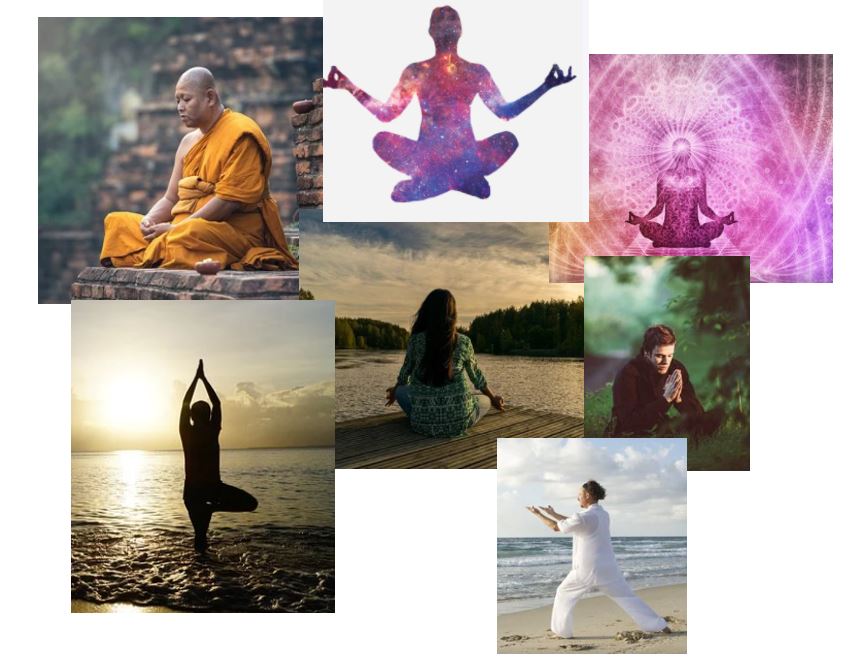I write this post to share with you a significant (or so I feel) threshold in meditation that I have personally achieved in my journey towards the ‘experiential path’. Those who have known me for many years will agree that I have been someone inclined towards the ‘gyan marg’ with regards to my personal journey of life. Some years ago, I felt that this knowledge path has served me well but is not likely to help me make the kind of leap that I intend to make in my life.
With that feeling growing into a compelling need, I started exploring ways and means by which I could take a leap towards experiencing life instead of just reading and learning about it. From character analysis (in fiction books and real life) to psychology and then to spiritual books, this journey of mine took me towards my first stint at a spiritual retreat for 4 days.
Those 4 days spent at Isha Foundation after an amazing solo road trip were mesmerizing but were still filled with a struggle that I felt, moving from logic and rational towards faith and belief. Despite the struggle, the feeling that experiencing a different dimension of life was the only way to go and so I stumbled and groped and yet continued my journey.
I write this post for all those who face initial hurdles in their experiential journey and may have abandoned it along the way. I write this post to encourage them to persevere.
The Right Way to Meditate
“There is no Path, and yet there are Many”
Meditation has become a buzzword these days and many people very proudly claim that they meditate for x number of minutes and even hours. It is considered to be an ancient oriental tradition that helps create a sense of calm and inner peace. Even though it is associated with ancient religions (specifically Buddhism and Hinduism), it is essentially a practice that helps in becoming more aware of oneself, having more control of one’s thoughts and emotions, being able to consciously control those thoughts and emotions, and recognizing the awareness or energy that each of us are.
A quick search on Google will tell you that there are various types of meditations that you can practice. Some of the terms and names that have popped up include mindful meditation, spiritual meditation, movement meditation, mantra meditation, kindness meditation, Zen meditation, kundalini meditation, body scan meditation, healing meditation, visualization mediation, and progressive relaxation meditation.
While I am intrigued by the thought of detailing out each of these for you, a quick search on the internet will give you all the information that you need and so, for brevity’s sake, I shall stick to the main message that I want to convey!
Despite everything that you read about how a meditation should be done or the steps that are detailed about how you should sit, whether your eyes should be open or closed, whether you need to be thoughtless or just observe your thoughts, or the manner in which you should breathe, there is no set SOP (standard operating procedure) that will lead you to your path.
In fact, my experience tells me that getting caught with the details of how a specific meditation should be done or the kind of meditation that you should do to achieve specific results will only lead you towards frustration if you are not able to do it the right way. This is especially true for those who are good at following rules and tend to follow the letter of the process mentioned.
Finding Your Own Personal Brand of Meditation

If you are eager to start practicing meditation, I suggest finding your own meditation style, to begin with. There is only one thing that you need to do to start – decide the time of day that suits you best where you are not likely to be disturbed and sit with yourself (with no distractions like the phone, television, or external noise).
Nothing else needs to be done. There is no time for which you need to sit. There are no instructions on how you should sit or what you should do. Just spend time with yourself!
If you feel like stopping, just stop! But make sure that you come back to sitting with yourself the next day again at the stipulated time.
Remember, this is meditation that you are doing to achieve peace of mind and if practical demands on your time take precedence over your time, let it be! Don’t get frustrated that you could not do what you had planned to do and give it the time it needs for it to become a habit. If you start stressing over a missed meditation, then the very purpose of the meditation is lost!
The only thing I will leave you with is to let it take the time that you need. This could be a few months or a few years! You will experience what you are supposed to during these times when you are with yourself.
Over time, you may discover yourself, understand your thoughts better, be able to think through your day with greater awareness, start feeling compassion, let go of your hurt, forgive others and yourself, feel more connected with the world, enhance your empathy, provide healing to your loved ones, visualize your future and manifest it, and receive the bountiful energy of the world.
I have no way of understanding or deciphering the path that your practice will take. But I can definitely say that it is a process that one day you will start to enjoy! From being unable to sit with my chaotic thoughts for 5 minutes, if I can reach a situation where I sit for more than an hour, force myself to come back to the practical demands of the world and still want to go back to that meditative state, I am sure there is hope for everyone who wants to experience meditation in their own personal style.
If you feel your head is too full of thoughts and ideas for you to sit still and want to work on this purposefully, contact me, and let’s talk about what is bothering you and where you want to be!


Reminds me of a poet’s lines:
अलग-अलग पथ बतलाते सब पर मैं यह बतलाता हूँ –
‘राह पकड़ तू एक चला चल, पा जाएगा मधुशाला।
Indeed, each one of us has to find one’s own path for finding peace of mind
Absolutely – love the poem Madhushala – so many possibilities in the interpretations itself!
There are 149 verses in the poem, and all end with the word Madhushala. Try reading all of them
बने पुजारी प्रेमी साकी, गंगाजल पावन हाला,
रहे फेरता अविरत गति से मधु के प्यालों की माला’
‘और लिये जा, और पीये जा’, इसी मंत्र का जाप करे’
मैं शिव की प्रतिमा बन बैठूं, मंदिर हो यह मधुशाला।।१९।
हाला = alcohol